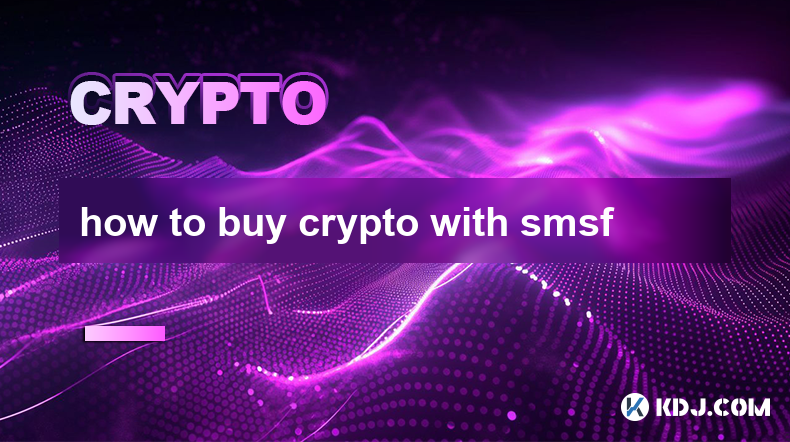-
 Bitcoin
Bitcoin $106,207.0476
3.22% -
 Ethereum
Ethereum $2,573.9363
8.97% -
 Tether USDt
Tether USDt $0.9999
-0.02% -
 XRP
XRP $2.3837
2.23% -
 BNB
BNB $650.8867
2.44% -
 Solana
Solana $169.9781
4.22% -
 USDC
USDC $0.9999
0.03% -
 Dogecoin
Dogecoin $0.2266
4.40% -
 Cardano
Cardano $0.7430
3.13% -
 TRON
TRON $0.2688
2.99% -
 Sui
Sui $3.8844
4.20% -
 Chainlink
Chainlink $16.1299
7.44% -
 Avalanche
Avalanche $22.5035
4.43% -
 Stellar
Stellar $0.2864
2.89% -
 Hyperliquid
Hyperliquid $26.5431
3.46% -
 Shiba Inu
Shiba Inu $0.0...01468
3.67% -
 Hedera
Hedera $0.1962
4.69% -
 UNUS SED LEO
UNUS SED LEO $8.7076
0.68% -
 Bitcoin Cash
Bitcoin Cash $395.1421
1.91% -
 Toncoin
Toncoin $3.0509
1.09% -
 Litecoin
Litecoin $97.7421
2.66% -
 Polkadot
Polkadot $4.6555
3.97% -
 Monero
Monero $347.5096
1.45% -
 Bitget Token
Bitget Token $5.1999
2.13% -
 Pepe
Pepe $0.0...01337
4.72% -
 Dai
Dai $0.9999
0.01% -
 Pi
Pi $0.7389
1.26% -
 Ethena USDe
Ethena USDe $1.0004
-0.01% -
 Aave
Aave $266.9683
25.12% -
 Uniswap
Uniswap $5.9927
5.55%
how to buy crypto with smsf
Buying cryptocurrency with an SMSF requires comprehensive planning, including understanding legal considerations, choosing a reputable exchange, and establishing a compliant digital wallet for secure storage.
Jan 31, 2025 at 03:06 pm

How to Buy Crypto with SMSF: A Step-by-Step Guide
The burgeoning cryptocurrency market has piqued the interest of investors worldwide, including SMSF trustees. SMSFs offer a flexible way to invest in a variety of assets, providing investors with significant control over their retirement savings. While purchasing cryptocurrency through an SMSF may seem daunting, it is an attainable process with careful planning and execution. Here's a comprehensive guide to help you navigate the complexities of buying crypto with SMSF:
Key Points
- Consider the legal and regulatory implications of investing in cryptocurrency with SMSF.
- Choose a reputable cryptocurrency exchange or broker that aligns with your investment strategy.
- Establish a dedicated SMSF-compliant digital wallet for storing crypto assets.
- Convert your AUD holdings into a currency accepted by the cryptocurrency exchange.
- Select the desired cryptocurrency based on research and market analysis.
- Securely transfer your purchased crypto assets to your SMSF wallet.
- Monitor and manage your cryptocurrency investment within the legal and regulatory bounds of an SMSF.
Step 1: Understand the Legal Considerations
Before venturing into cryptocurrency investments, it is paramount to comprehend the legal and regulatory aspects governing SMSFs. The Australian Taxation Office (ATO) has outlined specific guidelines for SMSF investment in cryptocurrencies. It is recommended to consult with a qualified financial advisor or lawyer to ensure that your investment strategy aligns with these guidelines.
Step 2: Selecting a Cryptocurrency Exchange or Broker
Choosing a reliable cryptocurrency exchange or broker is crucial for a seamless investment experience. Research various platforms, assess their fees, security measures, and customer support. Consider factors such as the range of cryptocurrencies offered, trading fees, and regulatory compliance. Reputable options include Coinbase, Binance, and Gemini.
Step 3: Establishing an SMSF-Compliant Digital Wallet
An SMSF-compliant digital wallet is essential for securely storing your crypto assets. Look for wallets that are specifically designed for SMSFs and meet the ATO's regulatory requirements. Consider wallets that provide secure storage, multi-factor authentication, and regulatory compliance. Some recommended options include Trezor, Ledger, and SafePal.
Step 4: Converting AUD to Cryptocurrency
Most cryptocurrency exchanges require you to convert your AUD holdings into a currency accepted by the platform. This typically involves withdrawing funds from your SMSF bank account and depositing them into your exchange account. The conversion process may vary depending on the exchange, but usually involves selecting the desired currency and initiating the transaction.
Step 5: Selecting a Cryptocurrency
With a vast array of cryptocurrencies available, it is important to conduct thorough research and market analysis to identify the most suitable investments for your SMSF. Consider factors such as market capitalization, trading volume, and underlying technology. Popular choices include Bitcoin (BTC), Ethereum (ETH), and Solana (SOL).
Step 6: Securely Transferring Crypto Assets
Once you have purchased your desired cryptocurrencies, it is essential to securely transfer them to your SMSF digital wallet. Follow the instructions provided by your exchange to initiate the transfer. Ensure that you double-check the wallet address to avoid any errors.
Step 7: Monitoring and Managing Your Investment
Investing in cryptocurrency requires ongoing monitoring and management to optimize returns and minimize risks. Keep abreast of market trends, regulatory updates, and the performance of your crypto assets. Regularly review your investment strategy and make adjustments as needed, in line with the ATO's guidelines for SMSF investments.
FAQs
1. Is it legal for SMSFs to invest in cryptocurrency?
Yes, it is legal for SMSFs to invest in cryptocurrency, provided it aligns with the ATO's guidelines and does not exceed the 20% limit on direct investments in a single asset class.
2. What are the risks associated with investing in cryptocurrency within SMSF?
Investing in cryptocurrency carries inherent risks, including market volatility, regulatory changes, and cybersecurity threats. It is important to conduct thorough research and understand the risks before investing.
3. How do I report cryptocurrency investments in my SMSF annual return?
Cryptocurrency investments should be reported in the "Other Investments" section of your SMSF annual return. Ensure that you maintain accurate records of your transactions and valuations.
4. Can I use my SMSF to purchase NFTs?
Generally, NFTs are considered digital collectibles and may not qualify as a cryptocurrency investment under the ATO's guidelines for SMSFs. Seek professional advice before investing in NFTs through your SMSF.
5. How do I sell cryptocurrency in my SMSF?
To sell cryptocurrency in your SMSF, you will need to initiate a sell order on the cryptocurrency exchange where it is held. Transfer the proceeds back to your SMSF bank account or reinvest them in accordance with the ATO's guidelines.
Disclaimer:info@kdj.com
The information provided is not trading advice. kdj.com does not assume any responsibility for any investments made based on the information provided in this article. Cryptocurrencies are highly volatile and it is highly recommended that you invest with caution after thorough research!
If you believe that the content used on this website infringes your copyright, please contact us immediately (info@kdj.com) and we will delete it promptly.
- Bitcoin Mayer Multiple Z-Score Is Still Under Its Mean
- 2025-05-20 12:35:13
- GENIUS Act Enters Formal Review Stage After U.S. Senate Passes Procedural Motion
- 2025-05-20 12:35:13
- Bitcoin price today on May 20, 2025 is trading at USD 1,05,163.45 at 3:11 AM IST.
- 2025-05-20 12:30:12
- BlackRock's spot Bitcoin ETF achieved nearly $3 billion in trading volume on a single day
- 2025-05-20 12:30:12
- URSWAP: The All-in-One DeFi Toolkit
- 2025-05-20 12:25:12
- The XRP price remains in a consolidation phase despite the latest launch of CME XRP futures
- 2025-05-20 12:25:12
Related knowledge

What is Ethereum’s Slashing mechanism and how to punish malicious behavior?
Feb 20,2025 at 03:08am
Key PointsOverview of slashingDifferent types of slashing in EthereumIncentives and consequences of slashingIdentifying and reporting slashed validatorsOngoing discussions and potential improvementsEthereum's Slashing Mechanism: Punishing Malicious BehaviorEthereum's slashing mechanism is an essential tool for ensuring network security and punishing mal...

What is the verifier node of Ethereum and how to become a verifier?
Feb 19,2025 at 06:00pm
The Verifier Node of Ethereum: A Comprehensive GuideKey Points:What is a Verifier Node?How to Become a Verifier NodeResponsibilities and Rewards of a Verifier NodeMinimum Requirements for Becoming a Verifier NodePotential Difficulties in Running a Verifier Node1. What is a Verifier Node?A Verifier Node is an independent entity on the Ethereum network th...

What is Ethereum’s staking, and how to participate and earn money?
Feb 19,2025 at 04:37pm
Key Points:Understanding Ethereum's Staking MechanismSteps to Participate in StakingBenefits and Rewards of StakingSecurity and Risk ConsiderationsTechnical Requirements and Hardware OptionsPotential Challenges and Troubleshooting TipsFAQs on Ethereum StakingWhat is Ethereum's Staking?Proof-of-Stake (PoS) is a consensus mechanism used in blockchain netw...

What is Ethereum’s DAO (Decentralized Autonomous Organization) and how does it work?
Feb 20,2025 at 03:12am
Key PointsDefinition and Structure of a DAOGovernance and Decision-Making in DAOsBenefits and Use Cases of DAOsChallenges and Limitations of DAOsWhat is Ethereum's DAO (Decentralized Autonomous Organization) and How Does It Work?Definition and Structure of a DAOA Decentralized Autonomous Organization (DAO) is an innovative governance and management fram...

What is Ethereum's multi-signature wallet and how to improve security?
Feb 20,2025 at 02:18pm
Key Points:Understanding the Concept of a Multi-Signature WalletBenefits and Drawbacks of Multisig WalletsRequirements for Setting Up a Multisig WalletStep-by-Step Guide to Generating a Multisig WalletImplementing Strategies for Enhanced Security1. Understanding the Concept of a Multi-Signature WalletA multi-signature (multisig) wallet in the Ethereum e...

What is Ethereum's oracle and how to provide data for smart contracts?
Feb 21,2025 at 01:30am
Key Points:Understanding the concept of oracles in EthereumExploring different types of oraclesDetailed guide on how to provide data for smart contractsAddressing potential challenges and considerationsWhat is Ethereum's Oracle?Oracles are crucial components in the Ethereum ecosystem, enabling smart contracts to access real-world data and off-chain even...

What is Ethereum’s Slashing mechanism and how to punish malicious behavior?
Feb 20,2025 at 03:08am
Key PointsOverview of slashingDifferent types of slashing in EthereumIncentives and consequences of slashingIdentifying and reporting slashed validatorsOngoing discussions and potential improvementsEthereum's Slashing Mechanism: Punishing Malicious BehaviorEthereum's slashing mechanism is an essential tool for ensuring network security and punishing mal...

What is the verifier node of Ethereum and how to become a verifier?
Feb 19,2025 at 06:00pm
The Verifier Node of Ethereum: A Comprehensive GuideKey Points:What is a Verifier Node?How to Become a Verifier NodeResponsibilities and Rewards of a Verifier NodeMinimum Requirements for Becoming a Verifier NodePotential Difficulties in Running a Verifier Node1. What is a Verifier Node?A Verifier Node is an independent entity on the Ethereum network th...

What is Ethereum’s staking, and how to participate and earn money?
Feb 19,2025 at 04:37pm
Key Points:Understanding Ethereum's Staking MechanismSteps to Participate in StakingBenefits and Rewards of StakingSecurity and Risk ConsiderationsTechnical Requirements and Hardware OptionsPotential Challenges and Troubleshooting TipsFAQs on Ethereum StakingWhat is Ethereum's Staking?Proof-of-Stake (PoS) is a consensus mechanism used in blockchain netw...

What is Ethereum’s DAO (Decentralized Autonomous Organization) and how does it work?
Feb 20,2025 at 03:12am
Key PointsDefinition and Structure of a DAOGovernance and Decision-Making in DAOsBenefits and Use Cases of DAOsChallenges and Limitations of DAOsWhat is Ethereum's DAO (Decentralized Autonomous Organization) and How Does It Work?Definition and Structure of a DAOA Decentralized Autonomous Organization (DAO) is an innovative governance and management fram...

What is Ethereum's multi-signature wallet and how to improve security?
Feb 20,2025 at 02:18pm
Key Points:Understanding the Concept of a Multi-Signature WalletBenefits and Drawbacks of Multisig WalletsRequirements for Setting Up a Multisig WalletStep-by-Step Guide to Generating a Multisig WalletImplementing Strategies for Enhanced Security1. Understanding the Concept of a Multi-Signature WalletA multi-signature (multisig) wallet in the Ethereum e...

What is Ethereum's oracle and how to provide data for smart contracts?
Feb 21,2025 at 01:30am
Key Points:Understanding the concept of oracles in EthereumExploring different types of oraclesDetailed guide on how to provide data for smart contractsAddressing potential challenges and considerationsWhat is Ethereum's Oracle?Oracles are crucial components in the Ethereum ecosystem, enabling smart contracts to access real-world data and off-chain even...
See all articles
























































































